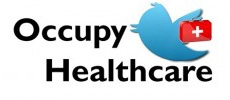Healthcare is full of examples where clinicians on the ground try to do good quality care, but inevitably are faced with barriers. This is the world of workaround. It is a world where common sense is often not encouraged, and in fact some cases discouraged. It is a world where attempts to do the right thing are met with barriers that have to be overcome in order to achieve the desired outcome. It is a world where we often work harder and get less.
From Wikipedia: “A workaround is a bypass of a recognized problem in a system. A workaround is typically a temporary fix that implies that a genuine solution to the problem is needed. Frequently workarounds are as creative as true solutions, involving outside the box thinking in their creation.”
Or an even better definition by Kobayashi: “informal temporary practices for handling exceptions to normal work flow” (pp. 1561)
Let’s take the issue of efficiency in healthcare to highlight workarounds. In an interesting and thought proving piece, Alan Garber and Jonathan Skinner discuss the inefficiency of the American healthcare system.
From a Health Economist post: “Economists generally define efficiency in two manners: productive efficiency and allocative efficiency. Productive efficiency means producing a good or service using fewest inputs. A car company who produces a car that costs $20,000 to manufacture is less efficient than a company that can produce that same car (at the same quality) at a cost of $15,000. Allocative efficiency is more subtle. Are we producing the right amount of cars compared to trucks? As gas prices rose, allocative efficiency compelled many car makers to shift to smaller passenger cars and hybrids compared to trucks.”
Consider the following opening lines from the Garber and Skinner paper: “Although countries around the world are grappling with the problem of rising health expenditures, the U.S. has reason for particular concern. Americans are dissatisfied with their health care system (Schoen, et. al., 2007) but also spend more than the citizens of other nations: 15 percent of GDP on health care in 2006, compared to 11 percent in France and Germany, 10 percent in Canada, and 8 percent in the United Kingdom and Japan (OECD, 2008).”

So we spend more money and are not too happy about the care we receive?
Now, back to the workarounds.
There are studies that show the more time a healthcare provider (nurses in this case), the better the patient health outcomes. Yet despite providers and patients preferring more time with one another, there exists a system that forces them to see each other in short periods of time. To remedy this problem, providers often come up with interesting workarounds to spend more time with their patients. Since the system rewards volume over outcomes, workarounds often become one of more interesting challenges to allow for providers to spend more time with their patients.
Garber and Skinner conclude: “Perhaps the greatest hope for improving both allocative and productive efficiency will come from efforts to measure and reward accurately outcome productivity – improving health outcomes using cost-effective management of diseases – rather than rewarding on basis of unit service productivity for profitable stents, caesarian-sections, and diagnostic imaging regardless of their impact on health outcomes. This will require rethinking what we pay physicians and hospitals for and most importantly how to measure and pay for outcomes rather than inputs.”
And again we come back to the idea that workarounds may not be the most efficient way to deliver healthcare. How can we create a system that is simultaneously efficient and effective? Somehow workarounds don’t seem to be the way to get there.
After all, “slowing health care cost growth, while sustaining and improving quality, will not be easy but is doable.”
